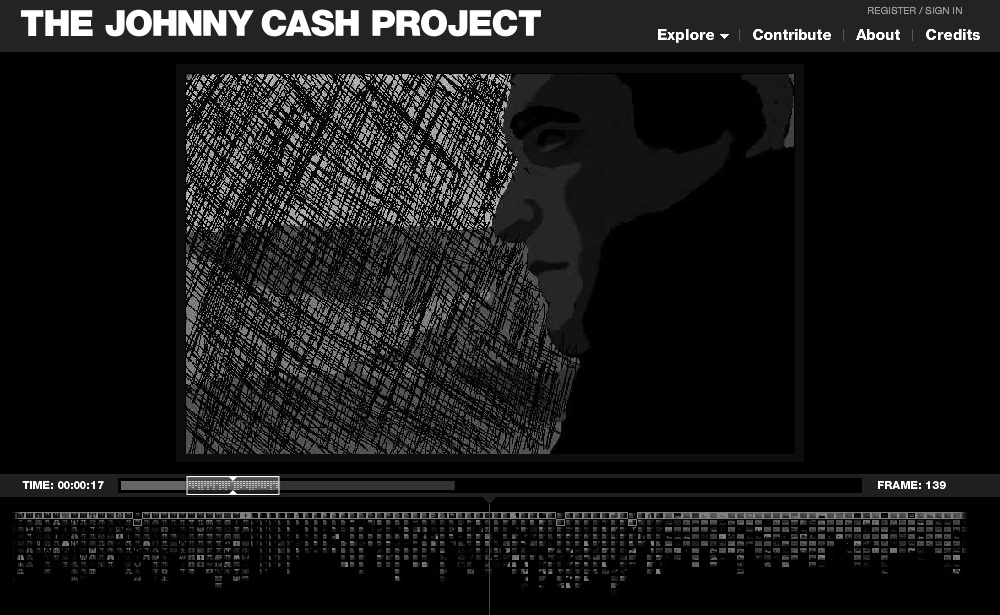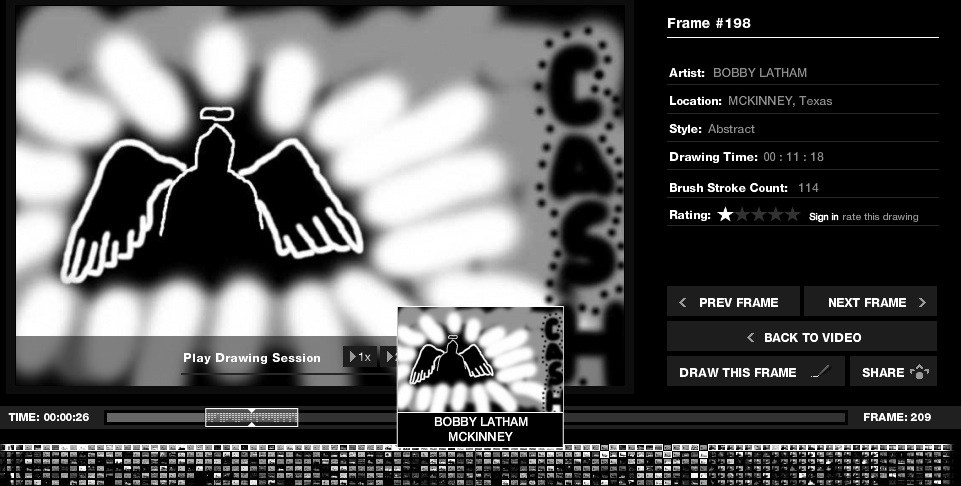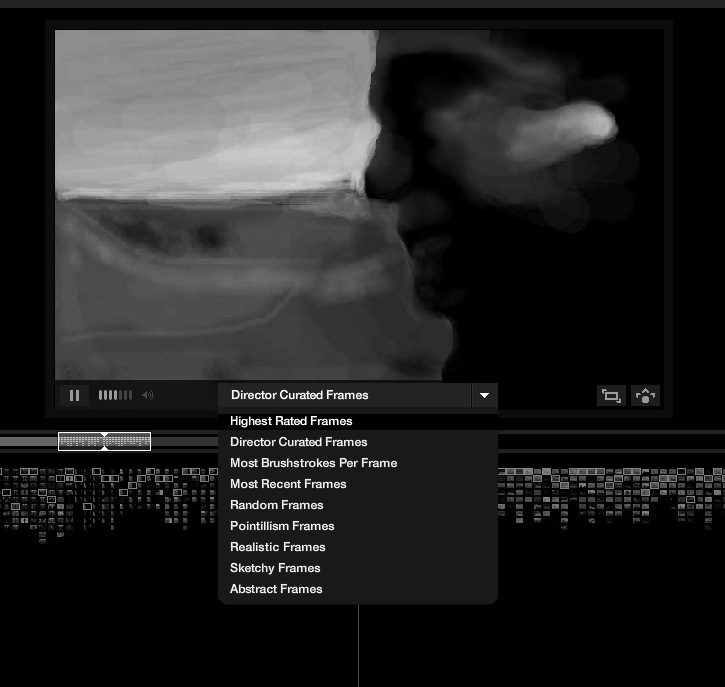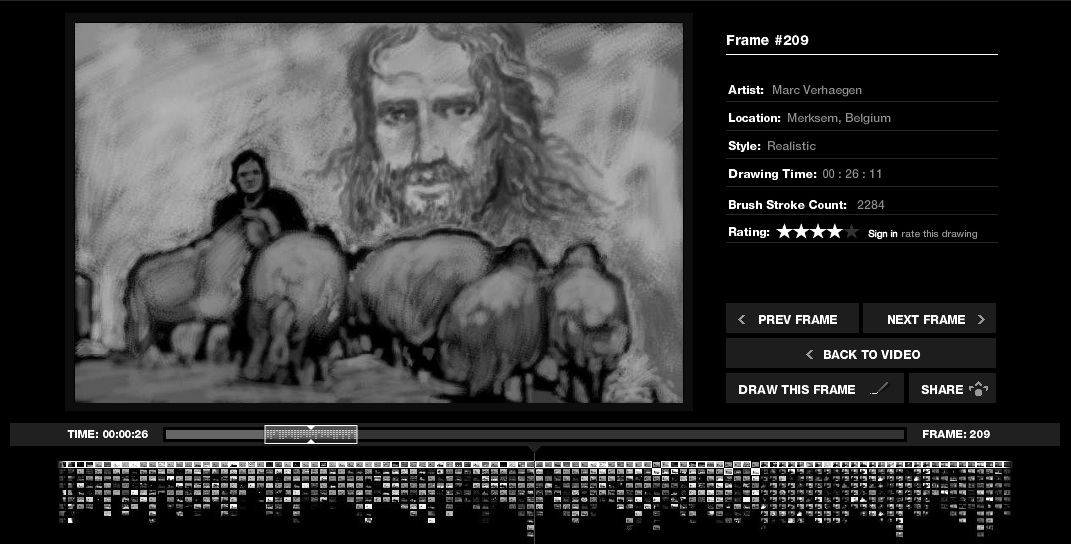
Screen Shot of the video opening in The Johnny Cash Project
Cyber memorials are interesting beasts. A new, more publicly available way to mourn, they are often sites of controversy - raising questions about representation, curation and the appropriation of tragedy. But what happens when a multimedia memorial invites visitors to actively participate in the creation and curation of the content? A hyper-mediated explosion of awesome (among other things).

Screen shot of frame contribution from Bobby Latham, McKinney, Texas
The Johnny Cash Project is a virtual space better explored than explained, but I'll do my best to give you an idea. Visitors are invited to contribute drawings of Cash to be included in a sort of hybrid rotoscope music video, the frames of which flash by in a psychedelic flurry of grayscale images. You can pause the video at any point to explore the frames individually, and you can even watch the"drawing session" in which the image was created.

Screen shot of the filtered viewing options
Visitors are also encouraged to rate the drawings, and the video can then be viewed from a variety of perspectives - the highest rated frames, the director curated frames, the most recent frames, and more. The project is incredibly malleable and interactive. It gives visitors an extreme sense of agency in both controlling their own experience and contributing to the experience of the memorial as a whole.

Screen shot of rame contribution from Marc Verhaegen, Merksem, Belgium
The project bills itself as a "living," "communal" work, and the language is interesting in terms of its push towards vitality, especially given the song selection - "Ain't No Grave." The idea is that the project will continue to grow, creating "a living, moving, and ever changing portrait of the man in black." It encourages a sense of assimilation and immortality. People can become a part of Cash himself (or at least the remembrance of him) by contributing an image to the collection, and the "portrait" will continue to live on.
All in all, the project raises interesting questions about mourning, memorial, agency and ownership. Aside from being a pretty amazing piece of hyper-mediated content, it's certainly a very democratic approach to memorial.
Recent comments
2 years 29 weeks ago
2 years 44 weeks ago
2 years 44 weeks ago
2 years 50 weeks ago
3 years 4 weeks ago
3 years 4 weeks ago
3 years 4 weeks ago
3 years 6 weeks ago
3 years 6 weeks ago
3 years 6 weeks ago